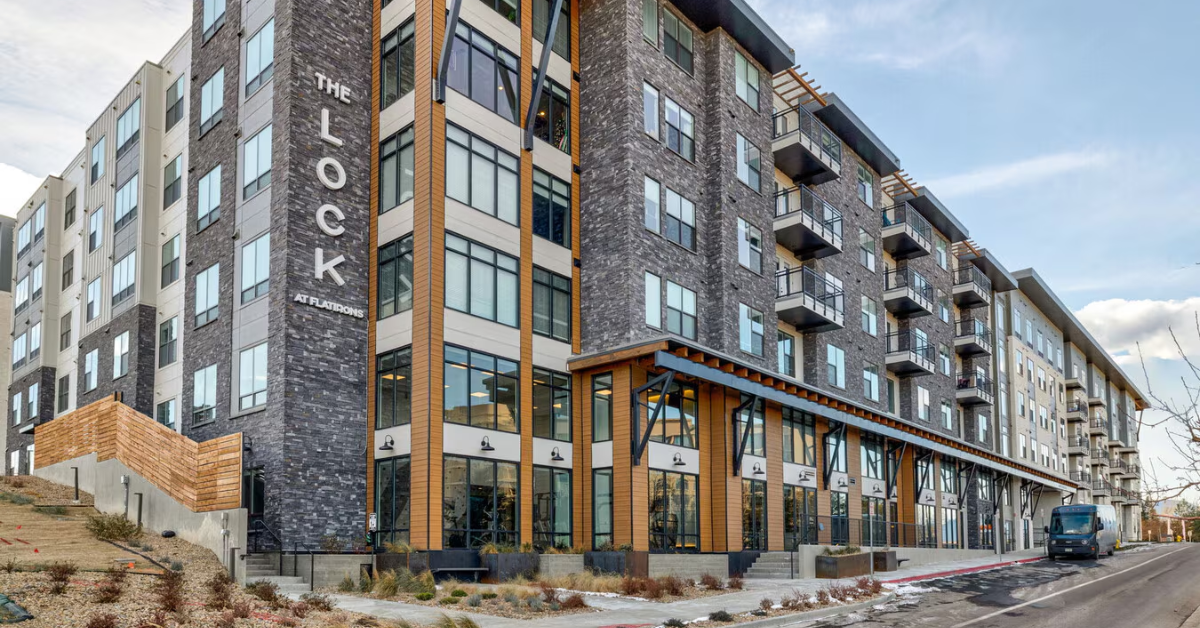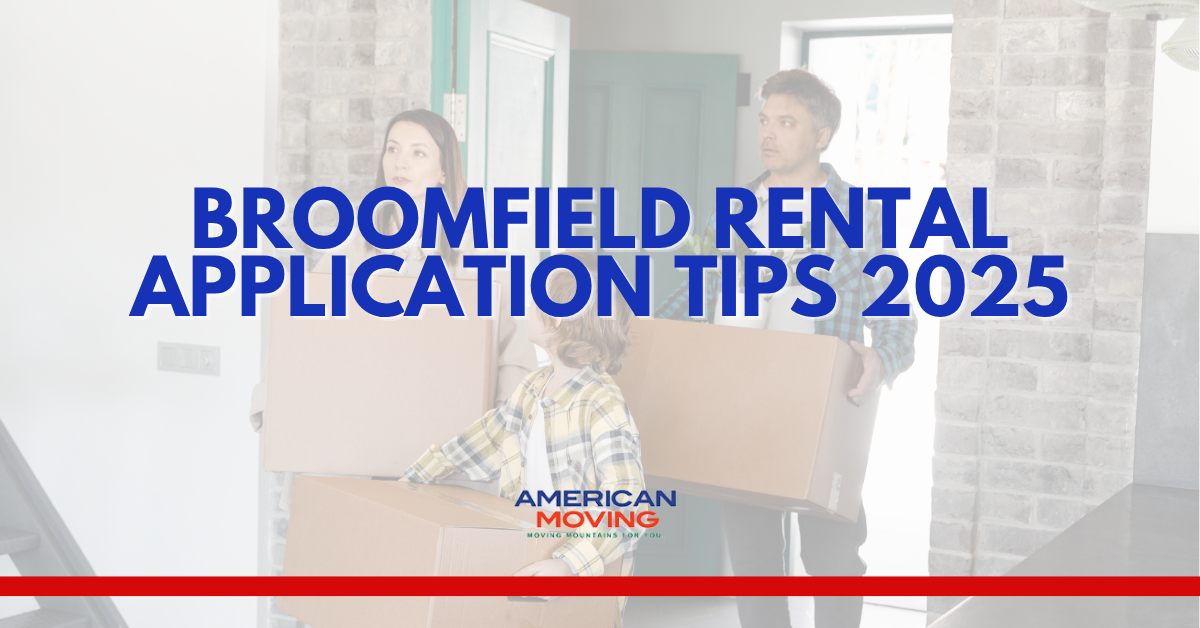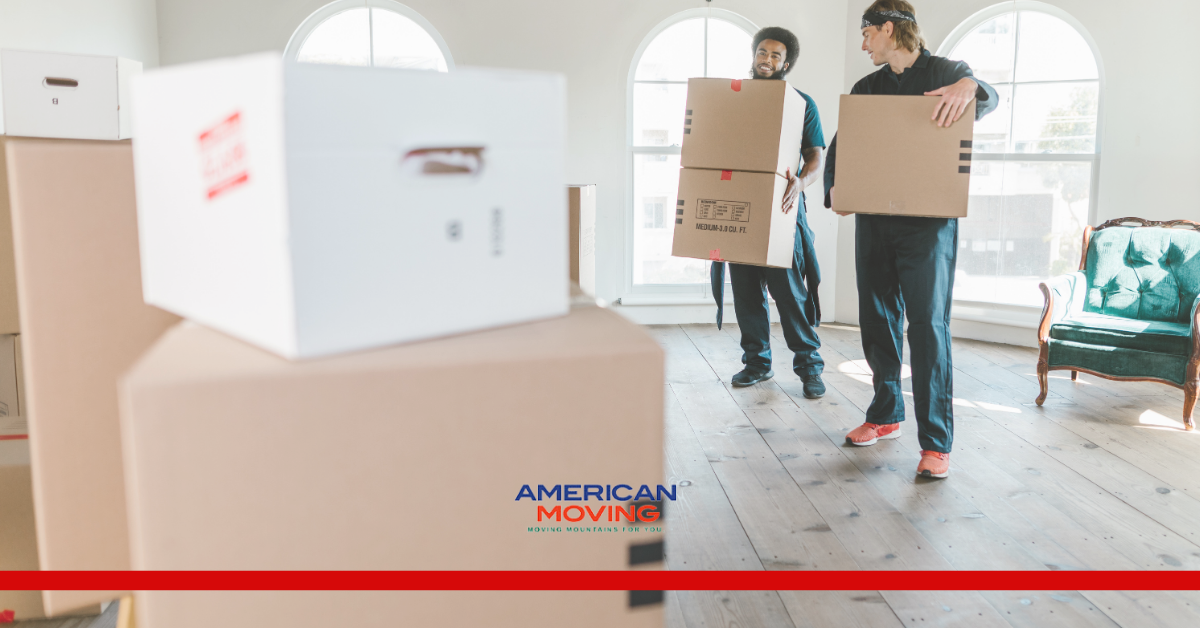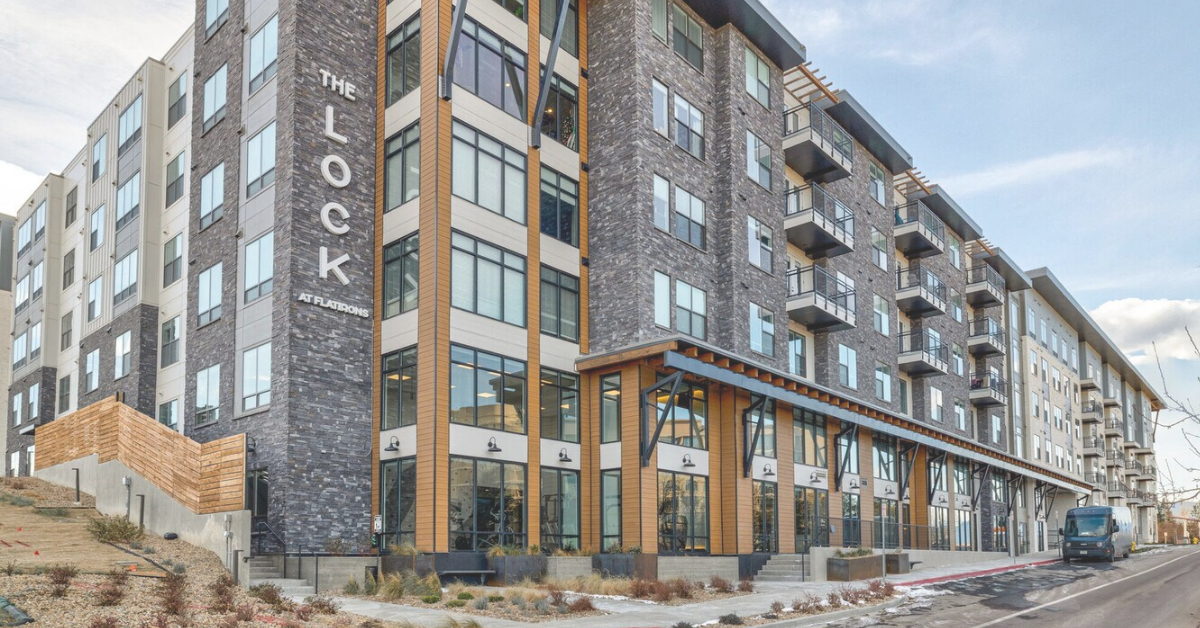Our Blog
Explore Our Insights: Tips, Stories, and Moving Advice from the Experts


Broomfield offers an exceptional blend of urban sophistication and Colorado lifestyle, making it a prime location for luxury apartment living. Situated perfectly between Denver and Boulder, this thriving city provides residents with access to world-class dining, entertainment, and outdoor recreation. Luxury apartments in Broomfield feature premium finishes, resort-style amenities, and modern designs that cater to discerning renters.
This guide explores the top luxury apartment communities near downtown Broomfield, highlighting their distinctive features, amenities, and what makes each property stand out in Colorado's competitive rental market.
Top 10 Luxury Apartments Near Downtown Broomfield
Finding the perfect luxury apartment requires knowing which communities offer the best combination of location, amenities, and lifestyle. These ten properties near downtown Broomfield represent the finest upscale living options available in the area.
Olivean Apartments
Olivean Apartments at 8251 Transit Way, Broomfield, delivers contemporary luxury with its modern architecture and premium finishes. The community features stainless steel appliances, quartz countertops, and spacious floor plans. Residents enjoy a resort-style pool, 24-hour fitness center, and a rooftop terrace with stunning mountain views.

Arista Uptown
Located at 8500 Arista Pl, Broomfield, Arista Uptown places residents in the heart of the city's premier mixed-use development. This luxury community offers sophisticated living spaces with floor-to-ceiling windows, designer kitchens, and spa-inspired bathrooms. According to Apartments.com, upscale communities like Arista Uptown typically command rental rates 30% higher than standard apartments due to their premium locations and amenities.

Caliber at Flatirons
Caliber at Flatirons at 13872 Del Corso Way, Broomfield, combines luxury living with stunning natural surroundings. The community showcases modern Broomfield luxury rentals with open-concept layouts, high-end appliances, and private balconies. Amenities include a resort-style pool with cabanas and a pet spa for four-legged residents.

Marquis at Town Centre
Marquis at Town Centre at 1001 E 1st Ave, Broomfield, offers sophisticated urban living in a walkable neighborhood setting. These high-end apartments Broomfield CO feature elegant interiors with wood-style flooring and granite countertops. American Moving frequently assists residents relocating to this premier address, recognizing its appeal among professionals and families.

Windsor Flatirons
Windsor Flatirons at 13780 Del Corso Parkway, Broomfield, provides upscale living in Broomfield that residents desire its thoughtfully designed floor plans and premium amenities. The apartments feature gourmet kitchens with islands, spacious bedrooms, and private outdoor spaces. The property's location offers scenic mountain views and convenient access to both Boulder and Denver.

Heights at Interlocken
Heights at Interlocken at 401 Interlocken Blvd, Broomfield, caters to professionals seeking luxury near major employment centers. The community features modern apartments with stainless steel appliances and contemporary finishes. Zillow reports that luxury apartments near business districts maintain occupancy rates above 95% due to high demand from working professionals.

Finley at Baseline
Finley at Baseline at 16600 Peak St, Broomfield, offers premium apartments near Denver with sophisticated designs and exceptional amenities. The units showcase granite countertops, wood-style flooring, and spacious layouts ideal for entertaining. The property's location provides quick access to Highway 36 and downtown Denver.

Summit at Flatirons
Summit at Flatirons at 210 Summit Blvd, Broomfield, delivers upscale apartment living with mountain-inspired design elements. These luxury units feature vaulted ceilings, fireplaces, and private balconies with scenic views.
Those interested in learning more about the surrounding areas should check out the Broomfield neighborhoods complete guide for comprehensive local insights.

Harvest Station
Harvest Station at 11775 Wadsworth Blvd, Broomfield, combines luxury amenities with a convenient location near major thoroughfares. The apartments feature modern kitchens, in-unit washers and dryers, and generous storage space. The property's proximity to shopping centers makes daily errands convenient.

Velo Interlocken
Velo Interlocken at 9001 Interlocken Loop, Broomfield, rounds out the top luxury apartment options with its contemporary design and premium location. According to RENTCafe, luxury apartments with smart home features see 25% faster lease-up rates compared to traditional properties.
Families considering this area will benefit from exploring the best family neighborhoods in Broomfield to understand school districts and community resources.

Premium Amenities to Expect in Broomfield Luxury Apartments
Luxury apartments in Broomfield set themselves apart through exceptional amenities that enhance daily living. Most upscale communities feature resort-style pools with cabanas and sun decks, providing perfect spaces for relaxation during Colorado's sunny days.
- Resort-Style Pools and Recreation Areas: Luxury communities feature heated pools with cabanas, sun decks, and outdoor lounges that create resort-like atmospheres.
- State-of-the-Art Fitness Centers: Many luxury apartments include yoga studios, group fitness classes, and dedicated spaces for stretching and functional training.
- Gourmet Kitchen Features: High-end kitchens showcase stainless steel appliances, quartz or granite countertops, and custom cabinetry that combine style with functionality.
- Smart Home Technology: Modern luxury apartments integrate keyless entry systems, programmable thermostats, and high-speed internet connectivity for seamless living.
According to Realtor.com, 78% of luxury apartment residents cite community amenities as a primary factor in their rental decisions.
Finding Your Perfect Luxury Apartment in Broomfield
Touring luxury properties requires preparation to make informed decisions. Schedule appointments during different times of day to assess natural lighting, noise levels, and community activity.
- Prepare for Property Tours: Bring a detailed list of questions about lease terms, pet policies, parking availability, and utility costs to ensure nothing gets overlooked. Take photos and comprehensive notes during each tour to help you accurately compare properties later.
- Ask Strategic Questions: Inquire with property managers about current specials, move-in incentives, and lease flexibility that could save you money. Request information about maintenance response times, security features, and community events that enhance the living experience.
- Understand Rental Market Timing: According to Redfin, luxury apartments often offer concessions during slower rental seasons, typically between November and February, when competition decreases. Spring and summer months see higher demand as families prefer moving before the school year.
Conclusion
Luxury apartments in Broomfield offer exceptional living experiences through premium amenities, sophisticated designs, and ideal locations between Denver and Boulder. These upscale communities provide residents with resort-style pools, state-of-the-art fitness centers, and modern interiors that reflect Colorado's lifestyle. Broomfield's luxury apartment market delivers options for every preference.
American Moving specializes in seamless relocations to Broomfield's finest apartment communities, ensuring your transition to upscale living is smooth and stress-free. Contact American Moving today to schedule your move and start enjoying everything luxury apartment living in Broomfield has to offer.


Finding the best apartment complexes in Broomfield, CO requires knowing which properties offer the perfect combination of location, amenities, and value. Broomfield sits strategically between Denver and Boulder, making it an ideal home base for professionals and families seeking suburban comfort with urban access.
This thriving community offers modern apartments in Broomfield, Colorado, that cater to diverse lifestyles and budgets. Whether you prioritize walkability to downtown shops, pet-friendly features, or luxury finishes, this guide highlights the top complexes near Broomfield's vibrant downtown core.
Top 10 Best Apartment Complexes in Broomfield, CO
Harvest Station
11775 Wadsworth Blvd, Broomfield
Harvest Station delivers quality living along Broomfield's major commercial corridor. This community provides convenient access to shopping, dining, and entertainment venues within minutes of downtown.
- Modern one, two, and three-bedroom floor plans with open layouts
- Full-size washers and dryers in every unit
- Fitness center with cardio and strength training equipment
- Pet-friendly community with a dog park and a pet washing station

Inkwell at Baseline
1752 W 167th Ave, Broomfield
Inkwell at Baseline brings contemporary apartment living to a prime Broomfield location. The property combines modern design with practical amenities for today's active residents.
- Luxury apartments in Broomfield featuring granite countertops and stainless steel appliances
- Clubhouse with coffee bar and co-working spaces
- Electric vehicle charging stations
- Close proximity to FlatIron Crossing Mall

The Lock at Flatirons
460 Flatiron Blvd, Broomfield
The Lock at Flatirons positions residents steps from Broomfield's premier shopping district. This location offers unmatched walkability to restaurants, retail stores, and recreation options.
- Pet-friendly apartments in Broomfield with no breed restrictions
- Updated kitchens with energy-efficient appliances
- Proximity to US 36 for easy Denver commutes
- Near Paul Derda Recreation Center

Ten 30 & Ten 49 Apartments
1030 E 10th Ave, Broomfield
Ten 30 & Ten 49 Apartments establish a residential retreat in the heart of Broomfield. The property features thoughtfully designed spaces that balance comfort with functionality for modern renters.
- Newly renovated units with luxury vinyl plank flooring
- Quartz countertops and designer lighting fixtures
- Business center with high-speed internet
- Walking trails and green spaces

Arista Uptown
8500 Arista Pl, Broomfield
Arista Uptown anchors Broomfield's most dynamic neighborhood with direct access to downtown's best attractions. Residents enjoy a true live-work-play environment with shops and entertainment at their doorstep.
- Spacious layouts ideal for families and roommates
- Rooftop lounges with stunning mountain views
- State-of-the-art fitness and wellness facilities
- Steps from 1STBANK Center and Arista dining

Finley at Baseline
16600 Peak St, Broomfield
Finley at Baseline delivers upscale apartment living in a convenient Broomfield location. The community emphasizes quality finishes and resident-focused amenities throughout the property.
- Contemporary finishes with wood-style flooring
- Island kitchens with breakfast bars
- 24-hour fitness center access
- Minutes from downtown shopping and dining

Summit at Flatirons
210 Summit Blvd, Broomfield
Summit at Flatirons provides quality housing near Broomfield's retail hub. The property balances affordability with desirable amenities for budget-conscious renters.
- Affordable Broomfield, CO apartment rentals without sacrificing quality
- Recently upgraded interiors with fresh paint
- Community garden plots available
- Near major employers and business parks

Velo Interlocken
9001 Interlocken Loop, Broomfield
Velo Interlocken places residents in Broomfield's premier business district with easy access to major employers. The community caters to professionals seeking modern living near work and recreation.
- Studio, one, and two-bedroom options available
- Resort-style pool with cabanas
- Co-working spaces with private meeting rooms
- Connected to the Broomfield trail system

Heights at Interlocken
401 Interlocken Blvd, Broomfield
Heights at Interlocken combines luxury living with professional convenience in Broomfield's business corridor. The property offers high-end finishes and resort-style amenities for discerning renters.
- Townhome-style apartments with attached garages
- Two-story layouts with additional privacy
- Gas fireplaces and vaulted ceilings
- Close to Broomfield Community Center

Flatiron Flats Apartments
11451 Via Varra, Broomfield
Flatiron Flats Apartments provides comfortable living near Broomfield's shopping destinations. The community emphasizes practical amenities and convenient access to major thoroughfares.
- One and two-bedroom apartments with efficient layouts
- Full kitchens with ample cabinet storage
- Playground and outdoor seating areas
- Close to FlatIron Crossing and dining options

What to Expect from Broomfield, CO Apartment Rentals
The rental market for apartments in Broomfield, Colorado, remains competitive in 2025. According to RENTCafe, the average rent for a one-bedroom apartment in Broomfield is approximately $1,650 per month, while two-bedroom units average around $2,100 monthly as of October 2024.
- Most Broomfield, CO apartment rentals require a standard application process with proof of income showing earnings at least three times the monthly rent. Application fees range from $40 to $75 per adult applicant, while security deposits usually equal one month's rent for standard units.
- Pet-friendly apartments in Broomfield are increasingly common throughout the area, with most communities welcoming cats and dogs. Pet deposits range from $200 to $500 per animal, plus monthly pet rent of $25 to $50, according to the National Multifamily Housing Council.
- Lease terms in Broomfield commonly span 12 months, though six-month options exist at premium prices. Renters insurance is mandatory at most complexes, with minimum coverage requirements of $100,000 liability protection per HUD guidelines.
Moving to Broomfield: Local Insights
Downtown Broomfield anchors the community with its pedestrian-friendly streets and local businesses. The Broomfield Neighborhoods: Complete Area Guide provides detailed information about different areas throughout the city.
- The Arista development has transformed the downtown core into a mixed-use destination featuring upscale dining and entertainment venues. Residents enjoy year-round events at the 1STBANK Center, which hosts concerts and sporting events throughout the year.
- Outdoor recreation defines the Broomfield lifestyle with over 300 acres of parks and 100 miles of trails connecting neighborhoods to open spaces. According to Walk Score, downtown Broomfield scores 65 for walkability, making daily errands achievable on foot.
- Broomfield's location offers unmatched commuting convenience with US 36 providing direct access to Boulder in 15 minutes and downtown Denver in 25 minutes. Redfin data shows Broomfield's median home price reached $650,000 in 2024, making apartments an attractive option for newcomers.
- Major employers, including Ball Corporation and Vail Resorts, maintain significant operations here, creating diverse job opportunities.
Conclusion
The best apartment complexes in Broomfield, CO, combine modern amenities, strategic locations, and strong community connections. Downtown Broomfield offers the perfect balance of suburban tranquility and urban accessibility for renters at every life stage. Whether you choose luxury apartments in Broomfield with high-end finishes or affordable options near transit lines, this growing city provides an exceptional quality of life.
American Moving understands the unique needs of Broomfield residents and stands ready to make your transition seamless. Contact American Moving today for professional moving services that turn your Broomfield apartment search into a stress-free reality.


Broomfield offers renters a unique position between Denver and Boulder, creating a competitive rental market with diverse pricing across neighborhoods. Understanding the average rent in Broomfield helps you budget effectively and identify which areas align with your financial goals.
This guide breaks down rental costs by neighborhood, explores factors influencing prices, and provides actionable tips for finding affordable options. Whether you're relocating from out of state or moving within Colorado, knowing what to expect in Broomfield's rental landscape helps you make informed housing decisions that fit your lifestyle and budget.
Broomfield Rental Market Data
Understanding current market conditions helps you time your rental search and set realistic expectations. Broomfield's rental market reflects strong demand driven by the city's location and quality of life.
The vacancy rate in Broomfield currently sits at approximately 4.2%, indicating a tight rental market with limited available inventory. Year-over-year rent growth has remained steady at 4-6% since 2024, slightly outpacing inflation but remaining competitive with neighboring cities.
Peak rental season runs from May through August when families relocate before the school year begins. Average days on market range from 18 to 25 days during this period, with desirable properties renting within the first week of listing. Rental occupancy rates hover around 95.8%, reflecting strong tenant retention and consistent demand.
What is the Average Rent in Broomfield by Neighborhood
The average rent in Broomfield varies significantly based on property type and location within the city. As of early 2025, renters can expect to pay approximately $1,850 per month for a one-bedroom apartment in Broomfield, according to recent market data. Broomfield's rental market has seen steady growth over the past year, with prices increasing approximately 4-6% since 2024.
Anthem (Anthem Ranch)
Anthem represents one of Broomfield's most desirable rental areas, with prices reflecting its master-planned community status. One-bedroom units start around $1,900 and reach $2,300 monthly, while two-bedroom apartments typically cost between $2,500 and $3,100 per month.
The neighborhood features extensive trail systems, multiple parks, and proximity to Flatiron Crossing Mall, which drives higher rental demand. Three-bedroom homes command $3,200 to $3,800 monthly, attracting families who value the Adams 12 Five Star Schools district and community amenities.
Broadlands
Broadlands offers more moderate rental pricing compared to Anthem while maintaining strong community features. One-bedroom apartments range from $1,700 to $2,000 monthly, while two-bedroom units typically cost $2,200 to $2,700 per month.
The area features its own recreation center, pools, and extensive open spaces managed by the Broadlands Metropolitan District. Three-bedroom rentals average $2,800 to $3,400 monthly, often including attached garages and yard access.
North Metro/Interlocken
The North Metro and Interlocken areas command premium rental rates due to their proximity to major employment centers. One-bedroom apartments near the Interlocken business district start at $2,000 and can exceed $2,400 monthly. Two-bedroom units range from $2,600 to $3,200 per month.
This area attracts professionals working at nearby corporate campuses. The FlatIron Crossing shopping area and numerous restaurants within walking distance justify higher rents. Three-bedroom apartments reach $3,400 to $4,000 monthly in newer construction.
Old Town Broomfield
Old Town Broomfield provides the most diverse rental pricing in the city. One-bedroom apartments range from $1,500 to $1,900 monthly, offering some of the area's most affordable options. Two-bedroom units typically cost $1,900 to $2,500 per month.
The neighborhood's walkable downtown core along Main Street features local businesses and community events. Three-bedroom homes vary from $2,400 to $3,200 monthly, depending on property condition.
For a comprehensive look at what each Broomfield area offers beyond rental prices, explore the neighborhoods complete guide.
What Factors Affect Rent Prices in Broomfield?
Several key elements influence how much you'll pay for rent across different Broomfield neighborhoods. Understanding these factors helps you anticipate costs and identify the best value for your needs.
- Proximity to major employers and transportation corridors: Apartments near the Interlocken business park or the US-36 corridor command premium prices due to reduced commute times. Properties within walking distance of RTD bus routes typically add $100 to $300 monthly compared to locations requiring vehicle dependence.
- School district quality and ratings: Rentals within the Adams 12 Five Star Schools boundaries average 8-12% higher than comparable properties in adjacent districts.
- Community amenities and features: Master-planned communities with pools, fitness centers, and maintained trails justify higher rents through included amenities.
Property age and condition: Newly constructed apartments built after 2020 command 15-20% premiums over comparable units from the 1990s. Modern appliances and improved insulation reduce utility costs but increase base rent.

Tips for Finding Affordable Rentals in Broomfield
Strategic planning and flexibility can significantly reduce your rental costs in Broomfield's competitive market. These proven approaches help you secure better rates and terms.
- Time your search for late fall or winter months: Rental demand drops between October and February, giving you a stronger negotiating position.
- Consider slightly older properties with good maintenance records: Buildings constructed in the 1990s or early 2000s offer 15-20% lower rents than new construction while providing reliable housing.
- Negotiate lease terms beyond just monthly rent: Ask landlords about waiving pet deposits, reducing security deposits for excellent credit, or including utilities in exchange for longer lease commitments.
- Expand your search to adjacent neighborhoods: Properties on the edges of premium areas like Anthem offer similar access to amenities at 10-15% lower costs.
Conclusion
Average rent in Broomfield reflects the city's desirable location between Denver and Boulder, with prices ranging from $1,500 to over $4,000 for premium three-bedroom apartments. Understanding what drives rental prices helps you identify the best value for your needs.
When you're ready to make your move to Broomfield, American Moving provides expert relocation services throughout Colorado, ensuring your transition is smooth and stress-free. Contact American Moving today to discuss how we can support your Broomfield move with professional service and local expertise.


Are you relocating for work or searching for your next home in Broomfield, CO? The application process can be competitive, especially in desirable neighborhoods where vacancies fill quickly. According to recent data from the U.S. Census Bureau, Broomfield's rental market has grown significantly, with median rent prices reaching approximately $1,850 per month as of 2024.
These Broomfield rental application tips will help you navigate the process with confidence and secure your ideal rental property. This guide walks you through everything you need to know about submitting a strong rental application in Broomfield.
Essential Documents You Need for Your Broomfield Rental Application
Preparing your rental application documents before you start touring properties saves valuable time and shows landlords you're a serious, organized candidate. Most Broomfield landlords and property management companies require a standard set of documents to process your application efficiently.
Proof of Income and Employment
Landlords typically want to verify that your monthly income is at least 2.5 to 3 times the monthly rent amount. Gather these essential income verification documents:
- Recent pay stubs covering the last two to three months. These documents prove your current employment status and verify your consistent income stream.
- Employment verification letter on company letterhead. This official letter should confirm your position, hire date, and annual salary, providing landlords with additional confidence in your employment stability.
- Tax returns for self-employed applicants. If you run your own business or work as an independent contractor, prepare your last two years of tax returns along with bank statements to demonstrate financial reliability.
The Colorado Department of Labor and Employment reports that Broomfield's median household income was $108,457 in 2023, which landlords use as a benchmark when evaluating applications.
Financial Records
Your financial documentation proves you have the resources to cover deposits, rent, and ongoing expenses. Essential financial records include:
- Bank statements from the past two to three months. These statements demonstrate financial stability, show available funds for security deposits and first month's rent, and reveal your spending patterns to landlords.
- Credit report from a reputable source. While landlords typically pull credit reports themselves during screening, having your own copy from AnnualCreditReport.com helps you address any potential issues proactively before they become obstacles.
Broomfield landlords generally look for credit scores above 650, though requirements vary by property and individual landlord preferences.
Identification and References
Personal verification documents and character references complete your application package. Make sure you have:
- Government-issued photo identification. A current driver's license or passport verifies your identity and confirms the personal information you provide on your rental application matches official records.
- Previous landlord references with contact information. References from your last two landlords provide valuable insight into your rental history, reliability as a tenant, and how well you maintained previous properties.
- Personal or professional references. Include contact information for employers, colleagues, or other professionals who can vouch for your character, responsibility, and trustworthiness as a potential tenant.
How to Prepare Your Broomfield Rental Application Documents
Organization is the foundation of a successful rental application in Broomfield, CO. Proper preparation streamlines the application process and positions you as a professional, detail-oriented candidate.
- Create both physical and digital copies of all required documents. Digital versions allow you to submit applications quickly for properties listed online, while physical copies remain useful for in-person property tours and management office visits.
- Verify that all information is current and consistent across materials. Inconsistencies between your stated employment dates, addresses, or income figures raise red flags for landlords.
- Update your references list with current contact information. Confirm phone numbers and email addresses are accurate, then give your references a courtesy heads-up.
- Prepare backup documentation for additional verification. Having extra months of pay stubs or supplementary reference letters demonstrates thoroughness and helps address any landlord questions.
The City of Broomfield reports processing times for rental applications typically range from 24 to 72 hours, so having complete documentation prevents delays. If you're researching different areas of the city, the Broomfield neighborhoods complete area guide offers valuable insights into local communities and rental availability.
Tips for Strengthening Your Rental Application in Broomfield
Competition for quality rentals in Broomfield can be intense, particularly in family-friendly neighborhoods. Strategic steps can differentiate your application from other qualified candidates.
- Offer an additional security deposit beyond the standard amount.
- Include a qualified co-signer if needed.
- Write a brief cover letter introducing yourself.
- Address credit issues upfront with honest explanations.
- Maintain prompt and professional communication throughout.
- Apply immediately when suitable properties become available.
The best family neighborhoods in Broomfield are particularly competitive, with many desirable properties receiving multiple applications within the first 24 to 48 hours of listing.

Understanding Broomfield's Rental Application Fees and Timeline
Rental application fees in Broomfield typically range from $40 to $75 per applicant, covering background checks, credit reports, and administrative processing. Colorado state law caps application fees at the landlord's actual costs for screening. According to the Colorado Division of Real Estate, landlords must provide itemized receipts if requested.
Most Broomfield property managers process applications within 48 to 72 hours, though complex situations requiring additional verification may take longer. Once approved, you'll typically need to provide a security deposit equal to one month's rent plus the first month's rent before moving in. Total upfront costs generally range from $3,700 to $5,550 for properties near Broomfield's median rent price of $1,850 per month.
Conclusion
Securing a rental in Broomfield becomes straightforward when you understand the application process and come prepared with organized documentation. From gathering proof of income and references to strengthening your application with strategic additions, these Broomfield rental application tips position you as an ideal tenant candidate.
When you're ready to move into your new Broomfield rental, American Moving provides reliable, professional moving services to make your transition smooth and stress-free. Contact American Moving today for a free quote and experience the difference that local expertise and exceptional customer service make in your Broomfield move.


Looking for short-term rentals in Broomfield, CO? Broomfield offers the perfect solutions for anyone seeking flexible housing options. Its prime location makes it an attractive destination for short-term living arrangements. The city's rental market has evolved to meet growing demand for furnished apartments and month-to-month lease options. If you are searching for ideal rentals, Broomfield delivers quality choices near downtown. This guide explores the top short-term rental properties, what makes Broomfield ideal for flexible living, and essential tips for securing your temporary home.
Top 10 Short-Term Rentals Near Downtown Broomfield
Finding quality short-term rentals near Downtown Broomfield ensures convenient access to shopping, dining, and entertainment. These ten properties offer flexible lease terms and prime locations within walking distance or short drives from the city center.
Polaris Apartments
Located at 11516 Wadsworth Boulevard, Polaris Apartments offers convenient access to downtown Broomfield and major transportation routes. This well-maintained community features modern amenities, including a fitness center, pool, and clubhouse. Month-to-month rentals in Broomfield become available after initial lease terms, with one-bedroom units starting around $1,750 monthly.

Olivean Apartments
Olivean Apartments at 8251 Transit Way provides contemporary living in the heart of Broomfield's Arista neighborhood. The property sits steps from shopping, dining, and entertainment venues. Furnished apartments in Broomfield, Colorado, includes stainless steel appliances, in-unit washers and dryers, and private balconies with monthly rates beginning at $1,900.

Harvest Station
Situated at 11775 Wadsworth Boulevard, Harvest Station delivers comfortable apartments with flexible lease options. The community welcomes short-term tenants seeking corporate housing Broomfield CO solutions. Residents enjoy access to a heated pool, fitness facility, and pet-friendly policies with pricing starting at $1,650 for one-bedroom units.

Destination at Arista Apartments
Destination at Arista Apartments, located at 8705 Parkland Street, offers upscale living in Broomfield's vibrant Arista development. Units feature nine-foot ceilings, walk-in closets, and modern finishes throughout. Extended stay in Broomfield, Colorado, includes furnished options starting at $2,200 monthly with flexible three-month minimum leases.

Flatiron Flats Apartments
Flatiron Flats Apartments at 11451 Via Varra provide spacious floor plans near FlatIron Crossing mall. The property offers convenient access to US-36 and downtown Broomfield's restaurants and entertainment. Short-term lease options begin at $1,800 for one-bedroom apartments, with two-bedroom units available from $2,300 monthly.

Velo Interlocken
Velo Interlocken at 9001 Interlocken Loop sits in Broomfield's prestigious Interlocken business district. This luxury community features resort-style amenities, including a saltwater pool, outdoor kitchen, and coworking spaces. Corporate renting packages start at $2,400 per month.

The Lock at Flatirons
The Lock at Flatirons, positioned at 460 Flatiron Boulevard, delivers modern apartments with tech-forward amenities. Smart home features, package lockers, and high-speed internet come standard in all units. Month-to-month options become available after a six-month initial term, with furnished units starting at $1,950 monthly.

Arista Uptown
Arista Uptown at 8500 Arista Place offers walkable urban living in downtown Broomfield's most dynamic neighborhood. Residents enjoy immediate access to shops, restaurants, and the 1stBank Center. Short-term rentals include fully equipped kitchens and in-unit washers and dryers, with pricing from $2,100 to $3,200 depending on unit size.

Fusion 355
Located at 355 Eldorado Boulevard, Fusion 355 provides contemporary apartments with flexible leasing options. The community features a 24-hour fitness center, resident lounge, and pet washing station. One-bedroom units start at $1,700 monthly, while two-bedroom apartments begin at $2,200 with short-term availability.

Sandalwood Apartments
Sandalwood Apartments at 170-290 Marble Street offers affordable short-term housing near downtown Broomfield. The established community provides reliable amenities, including covered parking, laundry facilities, and professional management. Month-to-month leases become available after initial terms, with studio and one-bedroom units starting at $1,500 monthly. For those exploring different parts of town, check out our Broomfield Neighborhoods: Complete Area Guide.

What to Know Before Renting Short-Term in Broomfield
Understanding lease terms helps secure the right short-term rental in Broomfield. Most properties require minimum lease lengths between three to six months, though some offer true month-to-month arrangements after initial terms.
Essential considerations before signing a short-term lease:
- Lease duration and flexibility: Most properties require initial lease terms between three to six months before offering month-to-month options, so clarify minimum commitments upfront to ensure the arrangement matches your timeline.
- What's included in rent: Short-term rentals typically include furniture, kitchenware, linens, and some utilities, but confirm specifics before signing, as some properties charge separately for electricity, internet, or parking spaces.
- Security deposit requirements: Furnished units often require security deposits equal to one to two months' rent to protect landlords against potential damage, so budget accordingly when calculating move-in costs.
- Pet policies and fees: Pet-friendly properties commonly charge a monthly pet rent between $25 $75 per animal, with weight restrictions limiting dogs to 50 pounds or less, though some communities welcome larger breeds with additional deposits.
- Application requirements: Credit checks and income verification remain standard even for short-term leases, with landlords typically requiring monthly income equal to three times the rent amount and application fees ranging from $35 to $75 per adult.
- Renters insurance mandates: Most communities require renters insurance policies protecting personal belongings and liability, with coverage starting around $15 monthly through providers like Lemonade.
Apartments.com provides detailed listings showing which amenities come standard versus optional add-ons. Zillow offers rental application checklists, helping prospective tenants prepare necessary documentation.
Conclusion
Short-term rentals in Broomfield, CO, provide flexible housing solutions in a thriving Front Range community. The properties near downtown offer modern amenities, convenient access to employment centers, and the freedom to explore before committing long-term. From furnished apartments to corporate housing packages, Broomfield's rental market accommodates diverse needs and budgets.
When you are ready to make Broomfield your home, American Moving stands ready to handle your relocation with professional expertise and local knowledge. Contact us today for seamless moving services that make your transition to short-term or permanent Broomfield housing stress-free and efficient.


Searching for the perfect rental in Broomfield, Colorado, requires knowing where to look and which platforms offer the most reliable listings. With the city's growing population and competitive housing market, finding quality rentals demands strategic use of trusted websites. This guide explores the best websites for Broomfield rentals, helping you navigate local listings efficiently. Understanding which websites deliver accurate, up-to-date Broomfield listings will streamline your apartment hunting process and help you secure your ideal home.
Understanding Broomfield Rental Prices and Neighborhoods
Broomfield rental prices vary significantly based on location, property type, and amenities. According to Rent.com market data, the average one-bedroom apartment costs approximately $1,650 monthly in 2025.
Two-bedroom units average around $2,100 per month, while three-bedroom rentals range from $2,500 to $3,200 monthly. Single-family homes command premium prices, typically starting at $2,800 for smaller properties.
The Broomfield rental market remains competitive, with average rental prices reflecting the city's desirability and convenient location. The city's median household income of $95,236, according to the U.S. Census Bureau, reflects its thriving economy and stable community.
Popular neighborhoods like Anthem and Broadlands offer newer construction with higher rental rates reflecting modern amenities. The Original Town area provides more affordable options while maintaining proximity to downtown shops and restaurants. Understanding neighborhood characteristics helps renters balance budget constraints with desired lifestyle features and community atmosphere.
For comprehensive information about different areas, check out our Broomfield Neighborhoods: Complete Area Guide to understand each community's unique characteristics.
Top Rental Websites for Broomfield Apartments and Homes
Finding quality Broomfield rentals requires using platforms that offer comprehensive local listings and reliable information. These websites provide the best tools for searching available properties in the area.
Zillow Rental Manager
Zillow stands as one of the most comprehensive platforms for Broomfield rentals. The website offers powerful search filters and detailed property information.
- Extensive listing database: Zillow features hundreds of Broomfield rental properties updated daily with new availability and price changes.
- Detailed property insights: Each listing includes photos, floor plans, amenities, and neighborhood data to help renters make informed decisions.
- Interactive maps: The platform's mapping feature shows rental locations relative to schools, parks, shopping centers, and transportation routes.
- Rental application tools: Zillow streamlines the application process with digital submissions and direct landlord communication features.
Apartments.com
Apartments.com specializes in multi-family housing options throughout Broomfield. The platform provides verified listings with comprehensive property details.
- Advanced search filters: Users can narrow results by price range, bedrooms, pet policies, and specific amenities like in-unit laundry or parking.
- Virtual tours available: Many Broomfield listings feature 3D tours and video walkthroughs for remote apartment hunting convenience.
- Verified contact information: The website ensures property management contact details are accurate and current for faster responses.
- Neighborhood guides: Detailed area information helps renters understand what to expect in different Broomfield communities.
Rent.com
Rent.com offers unique incentives and comprehensive search capabilities for Broomfield rental homes. The platform rewards renters with special offers when signing leases.
- Cashback rewards program: Renters can earn up to $200 in gift cards when they find and lease apartments through the platform.
- Personalized recommendations: The website's algorithm suggests properties matching your specific preferences and search history.
- Local market insights: Rent.com provides data on average rental prices and availability trends in Broomfield neighborhoods.
- Mobile app convenience: The user-friendly app allows on-the-go searching and saves favorite properties for easy comparison.
Trulia
Trulia excels at providing neighborhood-level data that helps renters understand Broomfield communities. The platform goes beyond basic listings to offer valuable local insights.
- Crime and safety maps: Interactive heat maps display crime statistics for different Broomfield areas, helping renters choose safe neighborhoods.
- Commute time calculator: The tool estimates drive times to work locations, considering typical traffic patterns during rush hours.
- School rating information: Families can review ratings and reviews for nearby elementary, middle, and high schools.
- Local amenities overlay: Maps show proximity to grocery stores, restaurants, gyms, and entertainment venues near rental properties.
HotPads
HotPads provides real-time rental updates with an intuitive map-based interface. The platform emphasizes visual searching and immediate availability notifications.
- Map-first interface: The unique design lets users explore Broomfield rentals geographically, identifying properties in preferred locations quickly.
- Real-time listing updates: New properties appear immediately, giving users a competitive advantage in fast-moving rental markets.
- Comprehensive filters: Search options include pet-friendly units, utilities included, and specific lease terms matching renter needs.
- Direct landlord contact: The platform facilitates immediate communication between renters and property owners or managers.
Local Broomfield Rental Resources You Should Know
Beyond national websites, Broomfield offers local resources that provide additional rental opportunities. The City of Broomfield website features community resources and local housing information for residents.
Local property management companies often list exclusive rentals not found on major platforms. Broomfield-specific Facebook groups and community boards share rental opportunities from individual landlords. The Broomfield Chamber of Commerce maintains business directories, including property management companies serving the area.
Connecting with local real estate agents who specialize in rentals provides access to upcoming vacancies before public listing. Many Broomfield neighborhoods have their own community associations that occasionally share rental availability information.

How to Find the Best Broomfield Rental Deals Online
Strategic searching maximizes your chances of finding quality Broomfield rentals at competitive prices. Setting up email alerts on multiple platforms ensures you see new listings immediately.
- Set up multi-platform alerts: Configure notifications on Zillow, Apartments.com, and HotPads simultaneously to capture Broomfield listings the moment they become available in your target neighborhoods.
- Time your search strategically: December through February typically sees 15-20% fewer renters searching, creating better negotiating leverage with landlords seeking to fill vacancies quickly.
- Search mid-month for deals: Most leases begin on the first of the month, so searching mid-month reveals properties landlords are motivated to fill with reduced rates or incentives.
- Verify listing legitimacy: Always confirm property ownership through Broomfield County Assessor records before submitting applications or sending money to avoid rental scams.
- Compare similar properties: Track at least 8-10 comparable Broomfield rentals, including rent, square footage, and amenities, to identify fair market rates and potential overpricing.
Conclusion
Finding the best Broomfield rentals requires using trusted websites that provide accurate, comprehensive listings and local market insights. Platforms like Zillow, Apartments.com, Rent.com, Trulia, and HotPads offer powerful search tools and verified property information. Understanding Broomfield's neighborhoods and rental price ranges ensures you find homes matching your budget and lifestyle preferences.
When you're ready to move into your new Broomfield rental, American Moving provides professional, reliable moving services tailored to your needs. Contact American Moving today for a free quote and experience stress-free relocation with Broomfield's trusted moving experts!


